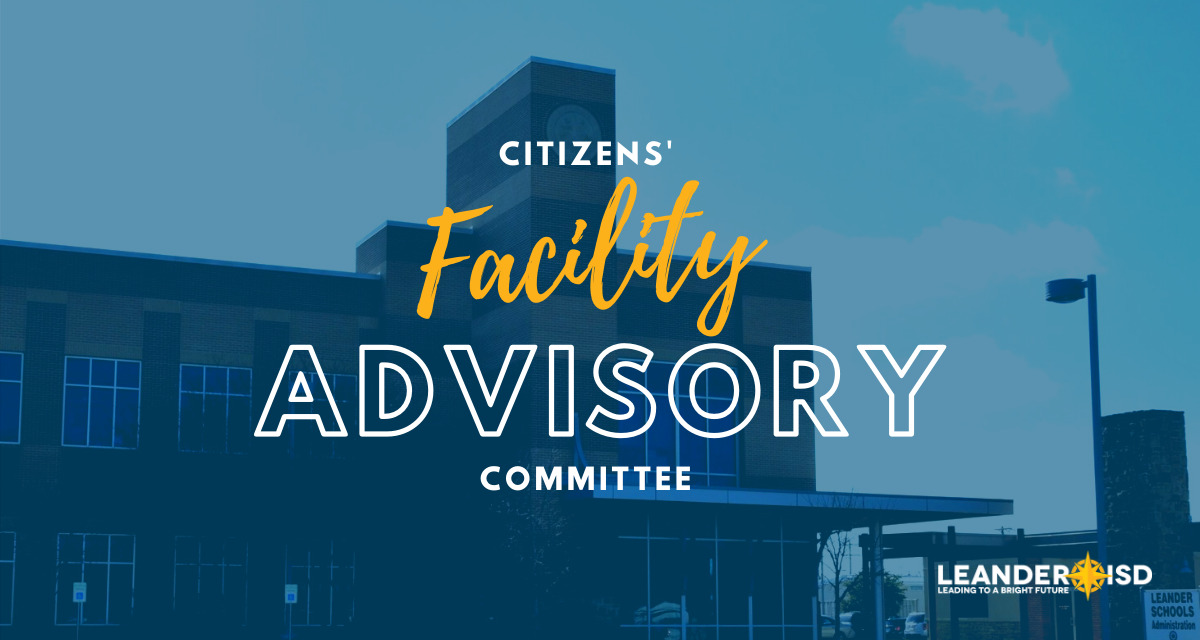The community committee charged with evaluating and recommending projects for the next school bond election discussed and debated schools of choice, amongst other projects, during their May 24 meeting.
Two weeks ago, a 150-member Citizens’ Facilities Advisory Committee (CFAC) presented $1.5 billion in potential projects, covering elementary, middle, and high schools, as well as ancillary or support services and technology. Last week, the 24-member CFAC steering committee heard a report about bond capacity under the current tax rate, giving between $600 million and $1 billion for projects without raising the tax rate as the district plans for 7,814 new students by 2026. The steering committee is now slimming down the proposed project list to cover items to be completed over the next three to five years. Ultimately, the steering committee and the Board of Trustees, the only entity that can call for an election, want to build a proposal voters will support in an election, which could happen as early as November 2021.
“This is where we find out as a community what we have a tolerance for in making our recommendations to the Board,” CFAC chairperson Shaun Cranston said. “Over the next few meetings, we will take a deep dive over the various areas we explored in our subcommittees. This can be complicated and can be emotional. But we are here for the good of our students.”
The recommendation from the high school subcommittee included the construction of a school of choice and building a new facility for the district’s current alternative school, New Hope High School.
Schools of Choice are smaller schools with special or targeted programming around a specific program or area of focus. The recommended option would provide a new choice for high school students while also delaying the need for a seventh high school at a lesser cost than a comprehensive, 2,400 student high school.
Addressing growth at high school while providing new programs
The district presented six options for expanding programming at high school and addressing crowding in the northern part of the district, specifically at Glenn and Rouse high schools, as well as some crowding at Leander and Vista Ridge high schools.
- Option 1 – Construct an Early College High School and two additional schools of choice (potentially at an underutilized facility), building a new facility for New Hope High School, and create a facility to house a Virtual Academy for $157.5 million.
- Option 2 and 2a – Construct schools of choice complex on district-owned property on Halsey Road in Leander to house a rebuilt New Hope High School, an Early College High School, and the third school of choice (potentially at an underutilized facility) for $120.0 million – $121.2 million.
- Option 3 and 3a – Rezone high schools to balance enrollment and build a complex for New Hope High School, an Early College High School, and one additional school of choice for between $93.6 million – $94.9 million.
- Option 4 – Rezone high schools to balance enrollment and build a complex for New Hope High School and an additional school of choice for $68.9 million.
- Option 5 – Rezone high schools to balance enrollment and build a seventh comprehensive high school and one school of choice for $301.7 million.
After a robust discussion, the CFAC selected Option 3a, which includes pursuing a partnership with Austin Community College (ACC) to put an Early College High School on the ACC San Gabriel campus, if possible.
New Hope High School is an existing Leander ISD school where students can obtain credits in a small, self-paced environment. An Early College High School is a national program where school districts partner with a higher education institution allowing students to take classes on a college campus, earning an associate’s degree or two years of credits at no cost to the student.
Middle school needs include a new school, renovations
Compared to the projects being considered at the elementary and high school levels, the issues around the middle school are cut and dry. The committee recommended major maintenance and renovation projects at Cedar Park, Canyon Ridge, Leander, Running Brushy, and Henry middle schools, as well as the district’s 10th middle school, planned for district-owned property in the city of Leander.
Districtwide, ancillary projects add functionality, modernization to school support teams
CFAC discussed and supported projects for capital improvements to district support facilities and equipment, including major maintenance renovations at the Don Tew and South Performing Arts Centers (PACs) and addressing issues at district warehouse facilities, including the Science Materials Center, where district science curriculum staff build kits for elementary classrooms.
Committee to meet several times in comings weeks before recommendation to Board
The 24-member community leadership group, CFAC, will work over the next few weeks to build a report for the June 17 Board of Trustees meeting. If they decide to call a bond election for November, the Board would need to take action by August 16.
The CFAC committee will meet on Wednesday, May 26 to discuss projects for elementary schools and districtwide technology needs.


